Seasons – Fall 2018
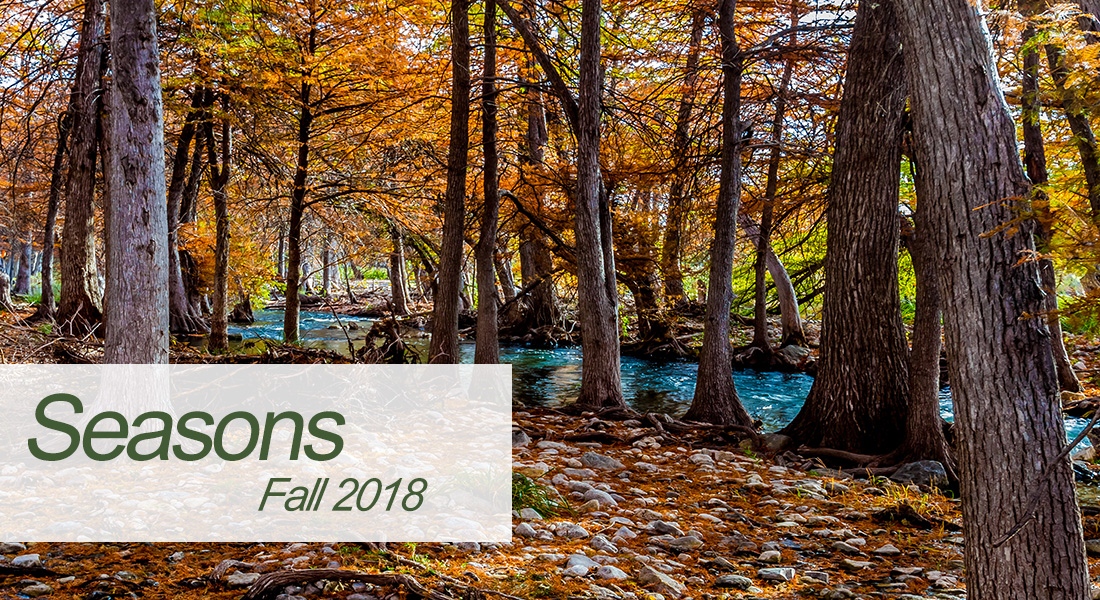
From the Plateau Land & Wildlife Management Team
It hardly seems possible, but another summer is behind us and a beautiful Texas fall is now upon us. With the arrival of fall, we all know that deer and quail season, crisp fall weather, changing leaves, and the holiday season are right around the corner. Our hope is that you all got to spend some quality time on your land this summer.
Fall brings a rejuvenated excitement for life and an eagerness to reconnect with the land. This spirit is reflected in this issue of Seasons, in which we highlight several opportunities to improve and enjoy your land while also knocking out a few compliance activities before the end of 2018. This issue will provide some great articles once again and hopefully, help you with ideas for activities and projects that are appropriate for this fall and winter.
Here at Plateau, we are also gearing up for fall by providing our clients, friends and colleagues plenty of educational opportunities to expand your knowledge of wildlife management tax valuation (exemption). Review the calendar of seminar opportunities and find one for you to attend in a city near you. This fall’s seminars have an added twist of having food and beverage available. We hope you will take some time out to join us and bring a friend.
Hopefully, this issue of Seasons will help jump-start your fall, and if there’s any way that Plateau can help you protect, enhance, or better enjoy your land during this special season, just give us a call. We’ll be here when you need us.
Until next season and Seasons,
The Plateau Team
Table of Contents
Monarch Butterflies
Fall Wildlife Management Activities Checklist
Introducing Tucker Slack
Birding Photography
TPWD: CWD Fact Sheet
Service Spotlight: Wildlife Management Actvities Consulting & Review
The People of Plateau
More Travis County Land Conserved
Plateau Land Group Featured Listing
Monarch Butterflies
By Sarah Kahlich, AWB ®, Senior Wildlife Biologist
Starting from August through October, subtle changes in the day length and temperature signal to the monarchs it is time to make their journey south. Monarchs make their incredible journey south to central Mexico and west to the California coast, and a few may winter along the Gulf coast or south Atlantic coast. Though unlike the many animals that make epic migrations, these butterflies will not return.
As winter draws to an end, these monarchs head a portion of the way north to warmer areas like Texas. It is here the monarchs will mate and lay their eggs on the undersides of milkweed leaves. After a few days, the eggs will hatch and the black, white, and gold caterpillar will emerge and start feeding on the milkweed plant. There are a variety of milkweeds utilized by monarchs, and many milkweed plants contain cardiac glycosides, which is stored in the bodies of both the adults and the caterpillar. This poison is extremely distasteful to predators. These very hungry caterpillars consume enormous amounts of milkweed before they start to form into a chrysalis and start their transformation into a butterfly.
Once these butterflies have hatched out, they continue the migration their parents had started and could not finish. This batch will fly another 200-300 miles and repeat the process in a new patch of milkweed. Upon reaching Canada, it has taken 4-5 generations to complete this 3,000-mile journey. When the temperatures start changing and the days start getting shorter, the monarchs will start their incredible journey back south again.
Ways you can help Monarchs (and other butterflies): Build a butterfly garden
Milkweed is the main food source for monarch butterflies and their caterpillars. You can plant multiple species of milkweed utilized by monarchs: antelope-horn milkweed, green milkweed, butterfly weed, and Texas milkweed (just a few of the species). Make sure that milkweed plants are planted in multiple groups of 3-4 so the caterpillars do not run out of food. Adult monarchs will drink nectar from a variety of other sources when milkweed is not available. Providing a wide variety of native flowers that bloom at different intervals ensure that monarchs get the necessary food they need to reproduce during the spring and summer as well as when they migrate in the fall.
If you are interested in creating a butterfly food plot, there are native wildflower seed mixes available. If your property is currently in a wildlife valuation, a butterfly food plot would count as a supplemental food activity. The food plot must be 1% of the total property to qualify.) Lantana, thistles, mistflowers, zinnia, Mexican sunflowers, verbenas, butterfly bush, bottlebrush, bee brush, Turk’s cap, frostweed, and bee balm are among a few wildflowers that monarchs (and other pollinators) will utilize during their migrations.
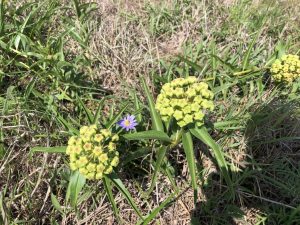
Antelope-horn milkweed before it blooms.
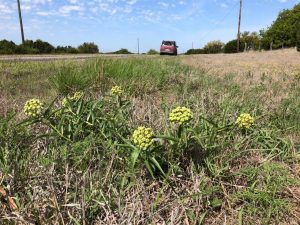
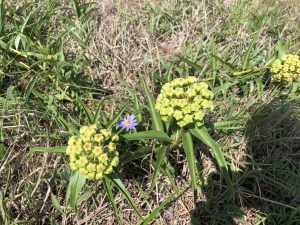
Back to TopBack to Top
Fall Wildlife Management Activity Checklist
By Kameron Bain, Landowner Account Manager
Fall is finally here after a long, hot summer. Recent rains and cooler temperatures have provided much-needed relief for all of us. This is the reason why fall is the perfect time of year to finish up your wildlife management activities! There are plenty of activities to keep you busy and to help if you are falling behind.
- Wintering and Resident Bird Survey – Start November 15
- Remote Camera Mammal Survey
- Imported Red Fire Ant Control
- Brush Management
- Re-seeding wildflowers and native plants
- Strip mowing and discing – Start November 1st
- Chemical control of Huisache and prickly pear
- Cut-stump herbicide treatments
- Tree and shrub planting – Start late Fall/Winter
- Brush Pile Construction
- Product Installs – Feeders, Water Tables, and Shelter
Introducing Tucker Slack, Senior Wildlife Biologist
 Tucker was born and raised in southeast Texas. Throughout his early life, he developed a love for animals and relished any excuse to get outdoors. His experiences hunting and fishing helped foster his appreciation for ecology and his desire to learn more about wildlife management.
Tucker was born and raised in southeast Texas. Throughout his early life, he developed a love for animals and relished any excuse to get outdoors. His experiences hunting and fishing helped foster his appreciation for ecology and his desire to learn more about wildlife management.
Tucker graduated from Texas A&M University with a B.S. in Wildlife Ecology and Management in 2001. He moved to South Carolina and worked with the U.S. Forest Service for 3 years, researching Short Rotation Woody Crops. Tucker continued to pursue a career in wildlife management and was fortunate to work as a Natural Resource Specialist for Texas Parks & Wildlife Department for over 12 years. His experiences on two different state-owned Wildlife Management Areas focused primarily on habitat management, public outreach efforts and coordinating public hunts. After almost 2 years living in Louisiana and working outside of the field of wildlife management, Tucker returned home to Texas and joined the Plateau Family in June 2018.
Tucker is excited to be a part of a team working to improve habitat management on private lands in Texas. He still appreciates any excuse to get outdoors and considers himself blessed to be a husband, father of two boys, and a Wildlife Biologist.
Back to TopBack to Top
Birding Photography
By Nick Fisher, Wildlife Services Technician
As a field technician, I’m constantly exposed to birding “opportunities” in the field and attempt to stay armed with my camera, a Panasonic DMC-FZ200. Although I’m intrigued by the challenge of taking wildlife photos, I constantly find myself frustrated by the quality of photos I end up with (often times after about a week of looking at them). Uncomfortably sneaking through thick brush, scraping elbows on the ground, and holding my breath until I almost pass out in order to get the shot is all worth it when the moment is caught and the lighting perfect.
Birding photography takes lots of patience, lots of looking back at blurry or empty pictures, and sometimes lots of “chasing.” Often times, the chase and the journey are just as rewarding as the capture itself. Learning your bird calls and witnessing birds making calls can be extremely helpful in bird photography. Another way to improve your chances of seeing birds in areas easier to photograph is by providing supplemental feeders, water sources or supplemental shelter.
Here are a few of my photos and some tips I learned from them. As an amateur photographer, please don’t expect anything too artsy – I do it purely for enjoyment.
- Crawling through the brush and cedar often requires using your manual zoom, allowing you to focus on what’s beyond the vegetation in between you and your wild turkey target.
- Surround yourself with flowers to see hummingbirds and other pollinators. Female Black-chinned hummingbird on Turk’s cap.
- Grasslands are covered in bugs! Many ground-nesting and ground-dwelling birds can be seen in grasslands at different times of the year, like this Eastern Meadowlark.
- Early mornings can lead you to different birds like owls and nightjars. This juvenile was seen bouncing between large pecan trees near Lake Travis.
- Knowing your bird calls can help you know what you’re looking for. A sad puppy sound can lead you to a Greater roadrunner- more often seen on the ground than in the trees.
- Learning different molting patterns can also help you identify birds. A juvenile Summer Tanager looks a little spotty in its first year.
- Since different birds appear at different times of the year, birding seasonally can help you to capture new birds continuously throughout the year. Migrant birds are usually seen traveling to a wintering or breeding location. Mississippi kites, for example, can be seen soaring way above as they pass through in flock-like fashion – but eventually, they have to land.
- You can always find new birds near bodies of water. Just scan the water’s edge before approaching in order to capture more elusive wading birds, like this Wilson’s snipe.
- Scissor-tailed flycatchers are a common flycatcher often found on fences and power lines near grassy areas. This one posed in a field of upright coneflowers allowing for quite a backdrop (also for an easier target to focus on.)
- A bright red flash nine times out of ten is a northern cardinal or summer tanager in this area, but be on the lookout for a vermillion flycatcher with a more striking red body and black wings.
- Install some supplemental shelter on your property for a chance to see some cavity-nesting birds like titmouse, chickadees, and wren. Check the nests in the spring for activity and clean out in the fall after nesting season to see your successes.
- Another good way to draw in some birds for photo opportunities is supplying a food source. These Woodhouse’s scrub jays enjoy some sun scratch on one of Plateau’s platform wild bird feeders.
Back to TopBack to Top
CWD Fact Sheet
 By Justin Dreibelbis, Program Director, Private Lands & Public Hunting, Texas Parks and Wildlife Department
By Justin Dreibelbis, Program Director, Private Lands & Public Hunting, Texas Parks and Wildlife Department
Chronic wasting disease (CWD) is a progressive and fatal neurological disease that affects some species of the deer family. White-tailed deer, mule deer, elk, red deer, sika deer, moose and reindeer are known to be naturally susceptible. More information on CWD can be found on the CWD Alliance webpage: http://www.cwd-info.org/
CWD has been found in captive white-tailed deer and free-ranging mule deer, white-tailed deer and elk in isolated areas of Texas. Texas Parks and Wildlife Department (TPWD) and Texas Animal Health Commission (TAHC) are conducting surveillance on deer and elk in the state and can use the assistance of hunters and landowners to provide samples from hunter harvest to aid in determining where CWD exists. Early detection of this disease is critically important to prevent it from spreading to other areas.
If you would like to help by having your harvest tested, please contact a wildlife biologist near you (https://tpwd.texas.gov/landwater/land/technical_guidance/biologists/) for assistance. Also, the locations of CWD sampling stations and other CWD information is available in the TPWD Outdoor Annual: https://tpwd.texas.gov/regulations/outdoor-annual/. You can also get the Outdoor Annual app on your mobile device: https://tpwd.texas.gov/regulations/outdoor-annual/app/.
More information about CWD in Texas is available on the TPWD website:
https://tpwd.texas.gov/s?q=Chronic+wasting+disease&filter=none
Information about CWD in exotic livestock is available on the TAHC website:
http://www.tahc.state.tx.us/animal_health/elk-deer/
Back to TopBack to Top
Service Spotlight: Wildlife Management Activity Consulting & Review
By Kameron Bain, Landowner Account Manager
For wildlife valuation landowners Fall is an important season. With just three months left you should be wrapping up your wildlife management activities for the year. It is important that all these activities are well-documented so you are ready when those annual report requests hit your mailbox. Some of you might be getting this request for the first time, while some of you just want to be sure you are on the right track and doing all of your activities correctly. These are just some of the reasons our Biology team created the new and improved Wildlife Management Activity Consulting & Review.
During this on-site visit, a Plateau biologist documents your wildlife management activities by using GPS, photos and field notes. During this visit, the biologist will discuss your specific Central Appraisal District’s requirements and answer questions about your activities and documentation. The site visit and report will also address possible improvements to your current activities and possible alternatives.
This service is $595 including mileage in our service region. Cleanout and documentation of nest boxes can be included for an additional $10 per nest box.
By purchasing the Wildlife Management Activity Consulting & Review you can now have the peace of mind that your wildlife management activities are in compliance, or you can take that time to catch up if you are behind. Either way you will be ready when that annual report request letter arrives.
The People of Plateau
Name: Allison Adele Spence
Role: Smiling Face Extraordinaire
Time with Plateau: Since 6.29.15
Hometown: Austin, TX

Before working at Plateau, what was the most unusual or interesting job you’ve ever had? Raising and bottle feeding whitetail deer.
What was your first job? Babysitting for the lead singer of Johnny Dee and the Rocket 88’s, Keith Landers. We moved to Austin from Brownsville TX in 1978 and moved right across the street from Keith. He was known for covering Beach Boys songs and the like in the 70’s and playing those same gigs at Aqua Fest in the 80’s early 90’s. He was also a feature of the “Don’t Mess with Texas” campaign in 1986.
What do you like most about working at Plateau? Working as a team is very important for progress as well as morale, so coming to work each day with our team players is most enjoyable.
How do you define success? Doing what you love so you never work a day of your life.
If given a chance, who would you like to be for a day? Someone with a photographic memory.
What is your favorite food? Hamburger, french fries and a vanilla shake
If you were an animal what would you be? A pampered horse
People would be surprised if they knew: I just bought a Doggy Stroller “Dogger” for my two Chihuahua’s. They are getting older and of course, have short legs so the Dogger will give them the option to ride or walk on long excursions. I know they both will enjoy it a lot! May even buy them some goggles.
Where would you like to travel? Milan, Italy to meet my grandmother’s family. But for fun ☺, an island such as Belize. Would love to stay in a bungalow that is actually out on the water and hike all around the beautiful island.
If you could learn to do anything, what would it be? A craft that I love to create and people would love to buy.
You’re happiest when? The seasons change from Winter to Spring and Summer to Fall.
Back to TopBack to Top
More Travis County Land Conserved
Braun & Gresham, PLLC



Braun & Gresham attorneys David Braun and Margaret Menicucci have been honored to work with several amazing families in conserving their Travis County properties this year. Margaret Menicucci helped her clients navigate the complex process of selling a 396-acre conservation easement on Los Madrones Ranch earlier this year. Most recently, David Braun assisted the Puryear family in conserving their land on Hamilton Pool Road that has been home for 138 years. The following photos of Puryear Ranch were kindly provided by the family. For more information about these conservation deals, read the article below by Hill Country Alliance.
“We are so thrilled to preserve this beautiful Texas land for future generations, keeping Puryear Ranch here forever.”
– The Puryear Family
Three Additional Ranches Conserved with Travis County Bonds
(Dripping Springs, TX) – On Monday, July 30th, Travis County and the Puryear family celebrated the closing of a real estate deal on their 423-acre historic ranch. Unlike most real estate deals, however, the property was not sold, which allows them to stay on the land where their family has lived for 138 years. The Puryears worked with Hill Country Conservancy to create a conservation easement that keeps the land from being developed in perpetuity. The project was funded through a combination of Travis County bonds and grants from the Natural Resources Conservation Service and the Texas Parks and Wildlife Department.
“Today, we celebrate the conservation of beautiful Hill Country land, and the partnerships with local landowners and land trusts that made it possible. Between our Conservation Easement Program and the Balcones Canyonlands Preserve, Travis County has now partnered in the preservation of more than 30,000 acres of exemplary Hill Country in the west and Blackland Prairie in the east,” said Travis County Judge Sarah Eckhardt. “And our work is not done. Expect to see additional strategic investments to preserve the hills and streams of Travis County. Families like mine that have lived here for generations know what it is to love this land and fear its disappearance. With these partnerships, we ensure that future generations and newcomers will have the chance to love and protect the unique splendor of this land, too.”
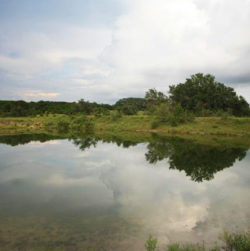 Puryear Ranch was the third property conserved with Travis County bond funding this year along the scenic Hamilton Pool Road corridor. The first two, the 738-acre Peacock Ranch and the 396-acre Los Madrones Ranch, were funded using the last of the 2011 bonds. In 2017, voters approved an additional $16.6 million in funding for conservation easements, and Puryear Ranch was the first project to be completed with that new funding. Together, all three ranches comprise more than 1,500 acres.
Puryear Ranch was the third property conserved with Travis County bond funding this year along the scenic Hamilton Pool Road corridor. The first two, the 738-acre Peacock Ranch and the 396-acre Los Madrones Ranch, were funded using the last of the 2011 bonds. In 2017, voters approved an additional $16.6 million in funding for conservation easements, and Puryear Ranch was the first project to be completed with that new funding. Together, all three ranches comprise more than 1,500 acres.
“This is one of the fastest-growing regions in the country, and the only way to balance that rapid development and support its health and resilience is by conserving its ecologically critical areas,” added Laura Huffman, Texas Director of the Nature Conservancy. “These three transactions safeguard some of the last extensive open space in the area and make an enduring investment that will benefit this region for generations to come.”
“Sensitive water, wildlife and scenic resources in the Hamilton Pool corridor are now permanently protected thanks to these private landowners, working in partnership with land trusts and government agencies such as Travis County,” added Frank Davis, Director of Land Conservation for Hill Country Conservancy. “Current and future generations of Texans will forever cherish their legacy of private stewardship and love for the land.”
The Hamilton Pool Road corridor has seen dramatic changes in recent years as development has increased. Conserving these properties helps protect water resources, scenic views, important wildlife habitat, and the region’s agricultural heritage. These common interests have brought together a diverse group of partners including private landowners, nonprofit land trusts, and government agencies to preserve part of the natural landscape as the County’s population grows.
“Julie and I wanted to protect this ranch that has been in my family for 50 years,” added Mike Murphy of Los Madrones Ranch. “With the conservation easement we can continue operations, and the ranch can still be passed onto heirs or sold. But now we know that the property will remain as unspoiled open, natural space for generations to come.”
Conserved Property Profiles
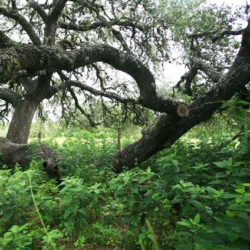 Puryear Ranch has been owned by the Puryear family since 1880. In recent years, they have seen the area around Hamilton Pool Road transformed by development and have felt the financial pressure to sell. They decided instead to enter into a partnership with Hill Country Conservancy, the Natural Resources Conservation Service, Texas Parks and Wildlife Department, and Travis County to complete a conservation easement on their 423-acre historic ranch. The family retained the right to build up to five homes on the property. Otherwise, it will be used for livestock grazing, wildlife management, hunting, fishing, and other recreation. Rocky Creek, which runs through Puryear Ranch, is a major contributor to Barton Creek, which is vital to the Edwards Aquifer and Barton Springs Pool.
Puryear Ranch has been owned by the Puryear family since 1880. In recent years, they have seen the area around Hamilton Pool Road transformed by development and have felt the financial pressure to sell. They decided instead to enter into a partnership with Hill Country Conservancy, the Natural Resources Conservation Service, Texas Parks and Wildlife Department, and Travis County to complete a conservation easement on their 423-acre historic ranch. The family retained the right to build up to five homes on the property. Otherwise, it will be used for livestock grazing, wildlife management, hunting, fishing, and other recreation. Rocky Creek, which runs through Puryear Ranch, is a major contributor to Barton Creek, which is vital to the Edwards Aquifer and Barton Springs Pool.
Los Madrones Ranch comprises 396 acres of limestone bluffs, open pastures, and diverse woodlands. The ranch has been in the Murphy family for the last 50 years, and was home to a cow/calf business until 1996 when members of the family sold half of their 800-acre ranch. In 2000, owner Mike Murphy converted the land from ranching to wildlife conservation. More than 70 species of birds have been observed there over the past decade, and at least seven pairs of the endangered golden-cheeked warbler nest on the property each spring. Los Madrones Ranch also contains a large portion of Bee Creek, an important tributary of the Colorado River.
Texas Land Conservancy (TLC) started working with Mike Murphy and his wife Julie de Wette in 2012 to apply for Travis County’s bond-funded Conservation Easement Program. Once their application was approved in 2013, TLC applied for matching funds from the federal Natural Resources Conservation Service. This funding was approved in 2016, and the conservation easement was finalized in late February 2018, ensuring the land would be conserved in perpetuity.
Peacock Ranch: With funding made available from the Travis County Conservation Easement Program, The Nature Conservancy recently worked with a local landowner to put a conservation easement on 738 acres of the Peacock Ranch along Hamilton Pool Road. The landowner bought the ranch specifically with the goal of conserving its scenic views and natural springs, which flow into Bee Creek and Lake Austin. The easement continues a long legacy of collaboration between The Nature Conservancy, Travis County, and other area land trusts to protect lands and waters in southwest Travis County, including nearby Reimers Ranch Park, Shield Ranch, and the Conservancy’s Barton Creek Habitat Preserve.

If you are considering a conservation easement or would like to learn more, give us a call at 512-894-5426.
Back to TopBack to Top
Plateau Land Group Featured Listing
Holland, Bell County, TX
106 Acres | $1,199,999
A rare and unique live water property waiting to be your next family oasis. This revenue generating property has been in the same family for over 100 years. Nestled on the Little River between I-35 and Hwy 95, this location is just minutes away from Temple and Belton. Long range views, majestic live oaks, 140 feet of elevation change, 1,300 feet of river frontage, and 3,000 feet of paved road frontage combine to make this a one-of-a-kind property.

View all of Plateau Land Group’s listings.
Click here to receive PLG’s newest listings by email.
Back to TopBack to Top




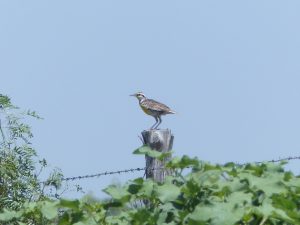
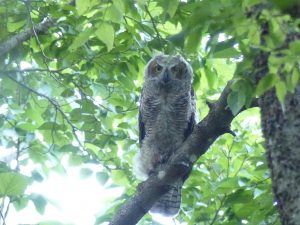
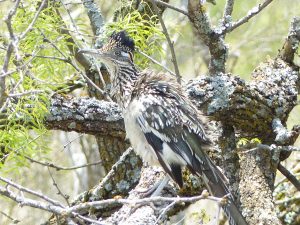
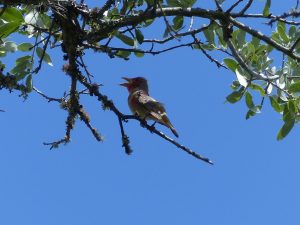
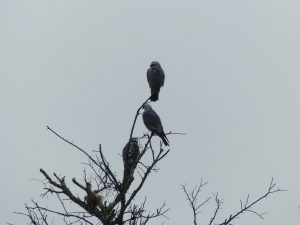
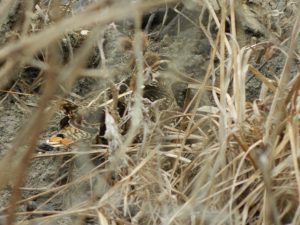
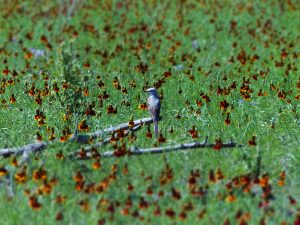

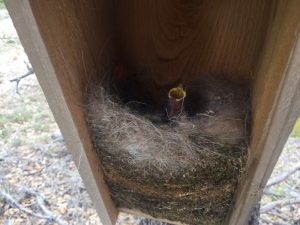
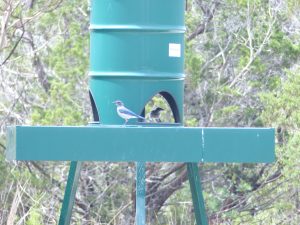

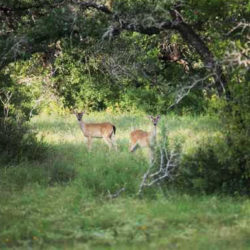
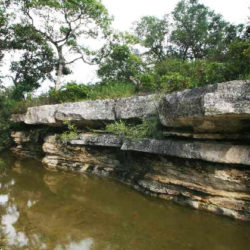




Sorry, the comment form is closed at this time.